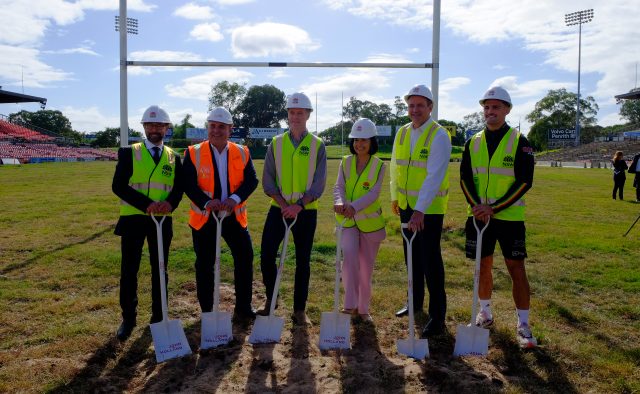Construction has officially commenced on the long-awaited new Penrith Stadium, marking a transformative chapter in the evolution of Western Sydney’s sports and entertainment scene. With the Premier of New South Wales on hand to ceremoniously break ground, the project has moved beyond the blueprint stage and into the physical realm—a $309 million endeavor that promises to reshape not just a venue, but an entire community’s connection to sport, culture, and place.
The significance of the new stadium extends well beyond its modern design and increased capacity. For many, Penrith Stadium is more than a collection of seats and concrete; it’s a symbol of local pride, the home of the Penrith Panthers, and a cultural hub where generations have gathered to cheer, celebrate, and sometimes mourn together. The new structure will honor that heritage while preparing the venue for a dynamic future, equipped with world-class amenities, sustainable building practices, and a versatile layout that caters to more than just rugby league.
With its official kickoff, the redevelopment is expected to take shape over the next two years, with a targeted completion date of 2026. When it opens its doors, the new Penrith Stadium will feature an increased seating capacity, rising from 22,500 to approximately 25,000, alongside vast upgrades to player facilities, media zones, and hospitality areas. The western grandstand will be completely rebuilt to house modern change rooms, coaching boxes, function areas, and premium viewing platforms, while the eastern stand will undergo significant refurbishment to bring it in line with contemporary standards.
Accessibility and inclusiveness have been prioritized in the design phase. The stadium will offer more wheelchair-accessible seating, sensory rooms for neurodiverse fans, and clearer pathways to ensure that everyone, regardless of physical ability, can enjoy the game day experience. This reflects a broader cultural shift in how stadiums are designed—not just as sporting cathedrals for able-bodied athletes and fans, but as community hubs that welcome everyone.
The Premier, speaking at the groundbreaking ceremony, emphasized the government’s commitment to investing in regional infrastructure, particularly projects that carry a strong community benefit. With Penrith rapidly growing as a suburban hub, the stadium is envisioned as a flagship for the region—a physical representation of the area’s ambition, vibrancy, and future potential. In his remarks, the Premier highlighted the job creation that will come with the construction phase, the long-term economic benefits of a modern stadium, and the importance of ensuring Western Sydney is not left behind in the state’s major infrastructure plans.
The Penrith Panthers, who have called the stadium home since the 1960s, will temporarily relocate during the construction period. While this change presents a logistical challenge, club officials have voiced their support for the project, understanding the long-term gain. For players, coaches, and support staff, the future facility offers an opportunity to train and compete in one of the most advanced rugby league stadiums in the country. For fans, it means better food and beverage options, improved bathroom facilities, and a more comfortable, enjoyable viewing experience.
Local businesses are also expected to benefit from the project, both during and after construction. Hospitality, transport, tourism, and retail sectors are likely to see a boost as the stadium draws visitors from across the region and beyond. Penrith’s city center is expected to receive a flow-on effect from the stadium’s activation, with plans already in place to improve surrounding public spaces and transport links, including better access from the Penrith train station and improved pedestrian connectivity.
The design process for the stadium was collaborative, with input from community stakeholders, disability advocates, sporting organizations, and the Penrith Panthers themselves. This approach ensures that the new venue will reflect not only the needs of elite athletes and broadcasters, but also the everyday fan who wants to bring their family to a game or attend a concert in a safe, accessible environment. That sense of shared ownership is expected to fuel excitement and civic pride as the stadium progresses from dream to reality.
One notable feature of the new stadium will be its multi-purpose design. While rugby league remains the anchor tenant, the space will be capable of hosting concerts, festivals, and other sporting codes. This versatility not only enhances its value to the community but also ensures the facility is financially sustainable, with year-round usage that justifies the investment.
Environmentally, the stadium will aim for high sustainability ratings, incorporating solar panels, rainwater harvesting systems, and environmentally friendly construction materials. The design team has committed to reducing the stadium’s carbon footprint through energy-efficient lighting, natural ventilation systems, and recycling initiatives. The hope is that Penrith Stadium will serve as a model for future stadium builds across Australia, demonstrating that it is possible to combine comfort, utility, and ecological responsibility.
As shovels hit the dirt and construction crews mobilize, excitement is building among the local population. This is more than just a facelift for an old stadium. It’s a generational project, the kind that defines a region for decades. Young fans will grow up with memories not of aging turnstiles and concrete benches, but of digital screens, high-definition scoreboards, and vibrant crowds roaring in unison beneath a striking new roofline.
The Premier’s presence at the kickoff event added political weight to the proceedings, signaling that the state views Penrith’s future as integral to the broader NSW story. With the Western Sydney Airport slated to open in the coming years and major transportation upgrades on the horizon, Penrith is no longer seen as a distant outpost but as a core component of the state’s future growth. A world-class stadium, then, is not just desirable—it’s necessary.
For lifelong fans who have watched from the same seats for decades, the change will be bittersweet. Nostalgia for the old days is understandable, and no amount of polished concrete or LED lighting can replicate the feel of a homegrown, grassroots footy game in a simple suburban stadium. But progress is often like that—messy, emotional, disruptive. And yet, for Penrith, it also promises a bold new chapter. The memories of yesteryear will live on in spirit, even as new ones are forged in steel and glass.
As the dust rises and foundations are laid, the dream of a better Penrith Stadium is no longer confined to renderings and announcements. It’s happening—brick by brick, beam by beam. A venue worthy of champions is on its way, and when it finally opens its gates, it will do so not just for the Panthers, but for all of Western Sydney.



